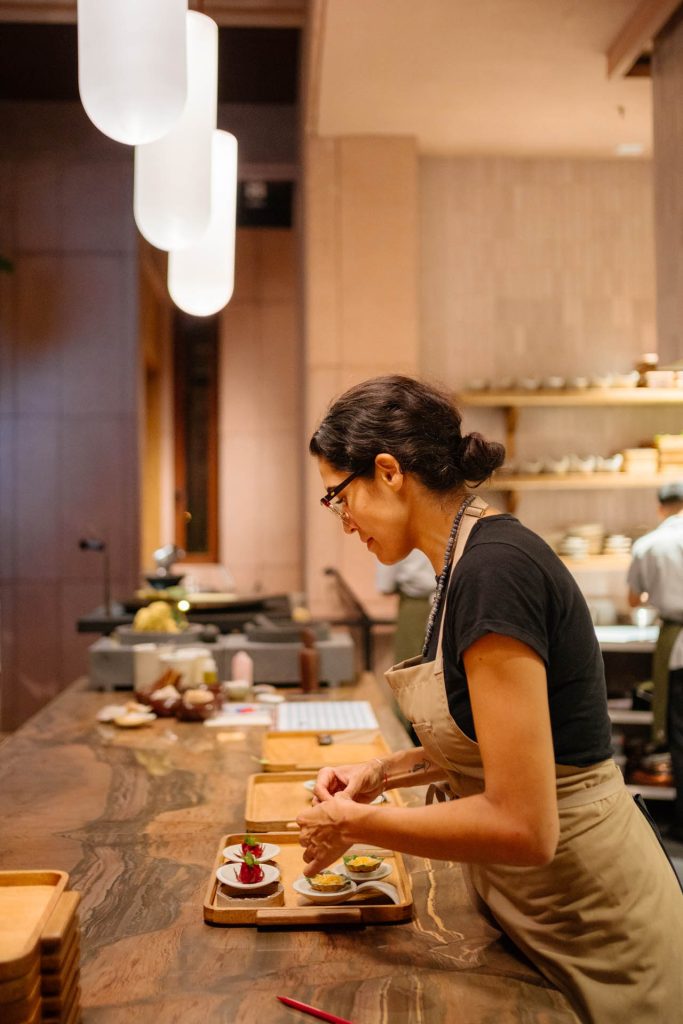
Followers of one of the world’s best chefs will no longer find her at Cosme, a contemporary Mexican restaurant in New York City’s trendy Flatiron District. In Mexico, Chef Daniela Soto-Innes is back to her roots—literally. Dressed in an apron, she’s stepping through “El Huerto,” proudly pointing out fruits, vegetables, and herbs thriving in her personal two-acre plot on the grounds of W Punta de Mita.
As an expression of her signature dishes, fresh organic produce finds its way onto plates at Rubra, the newly opened destination restaurant at W Punta de Mita. Chef Daniela’s plant- and seafood-forward menu brings her creativity and passion for homegrown ingredients into focus.
After pinching a herbal leaf for me to nibble, Daniela promised to guide me deeper into the garden as soon as she’d settled on the evening’s playlist. Although I was initially surprised at the lack of pre-event delegation, before the night was over, I realized I shouldn’t have been. I was in the presence of an architect and artisan powerhouse.
Things Come to Life
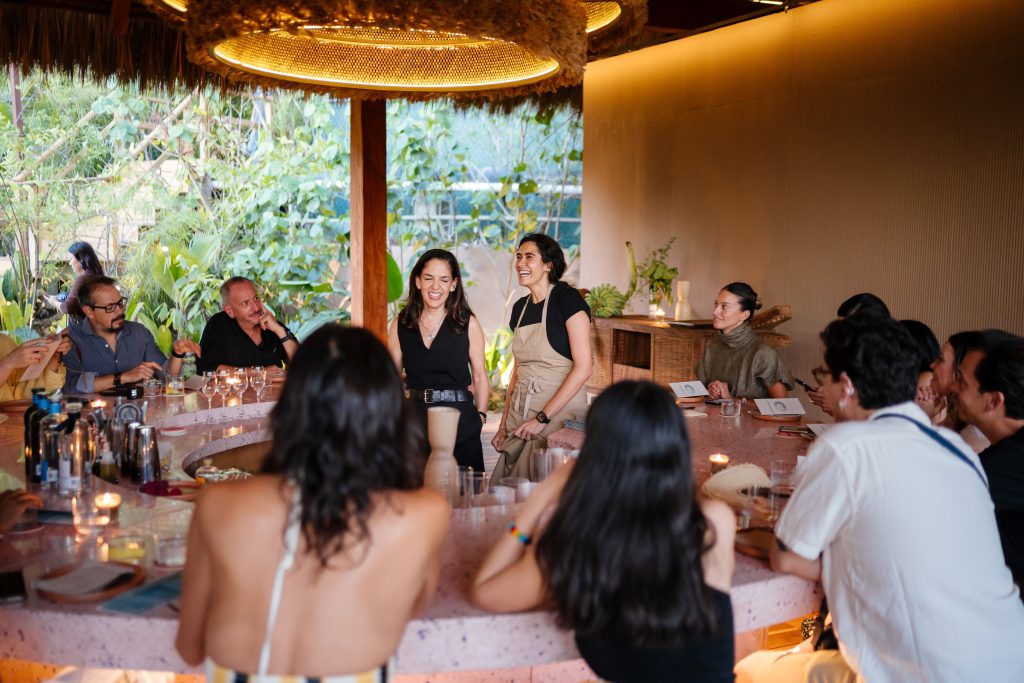
Known to fishermen and surfers, Punta de Mita in Riviera Nayarit is a coastal region lining Banderas Bay about 30 miles north of Puerto Vallarta. On a sun-drenched late afternoon in spring, dozens of admirers came to join Soto-Innes together with master tequilera/CEO Bertha González Nieves and co-founder of Casa Dragones, at the Palapa Bar, a new open-air tasting room where a chic circular terrazzo bar sits beside the garden.
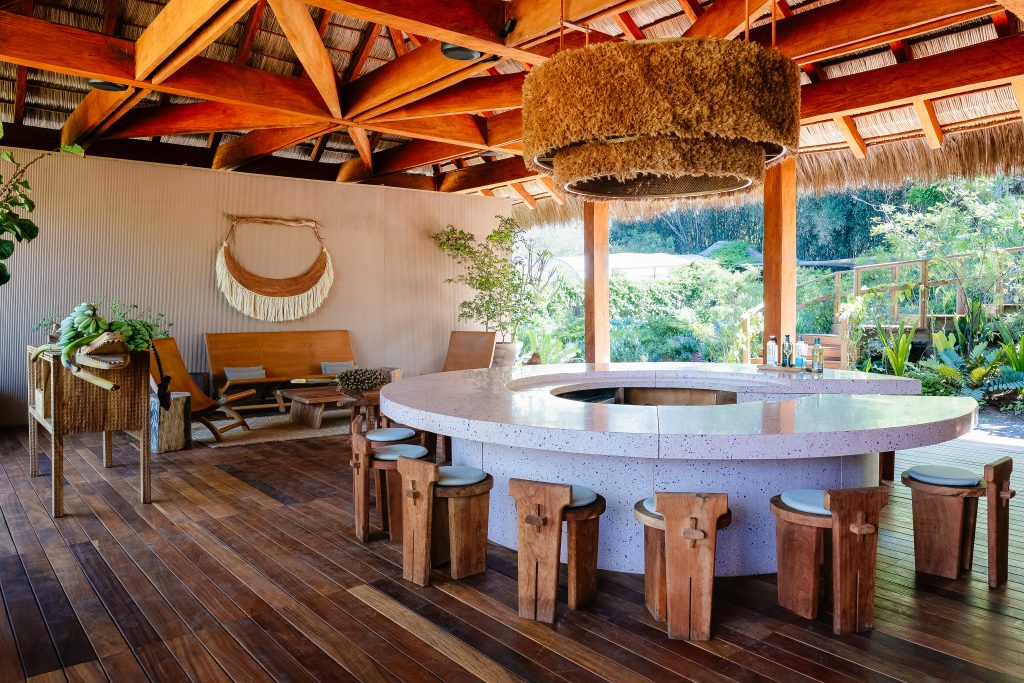
Over tequila cocktails under a lamp made of agave leaves, we listened to makers and mixologists discuss the intention and inspiration behind every detail, from the thatched roof and compostable materials to the spirit of Nayarit storytelling poured into our glasses.
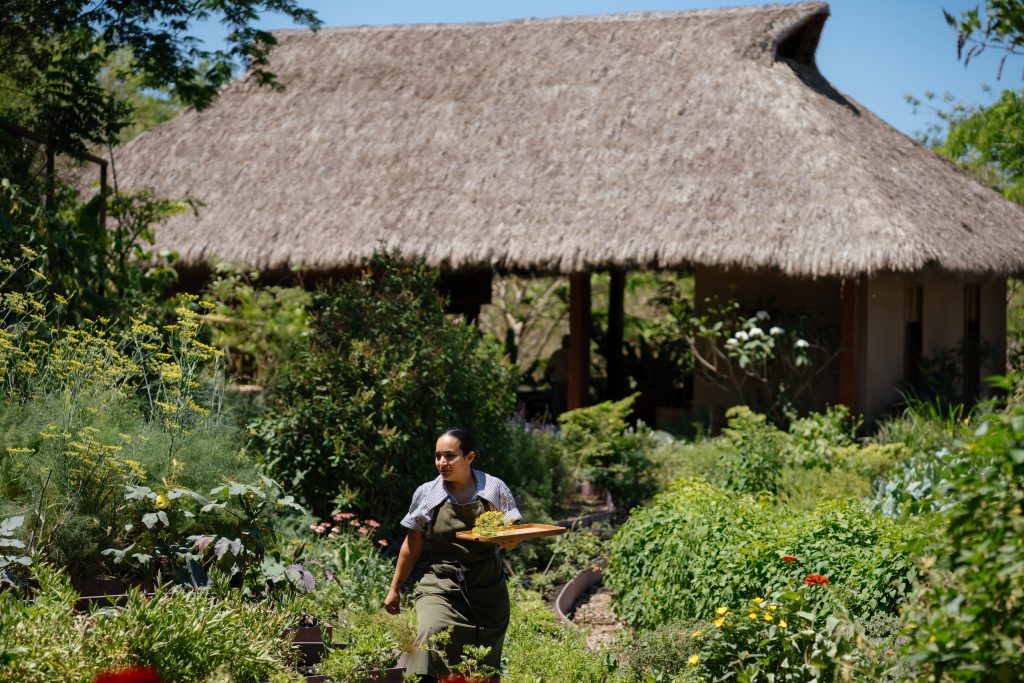
“We wanted to have a lot of chaya, hoja santa—all the Mexican medicinal herbs that you could think of,” Soto-Innes said. “We have papaya, mango, cacao, acacia, a lot of different tropical ingredients, guava, fresh hibiscus, jackfruit – lots of different, fun ingredients that I wasn’t able to have access to in New York or anywhere else.”
Such things don’t sprout overnight…especially in a jungle climate where the rainy season makes cultivation challenging. After two years in the planning, planting, and experimenting process, gardeners have specially designed tiers, troughs, and greenhouses to make best use of the landscape and terroir. “All the basics of cooking are here. It was hard, really hard, we cried a lot in this place,” recalls Daniela. “But collaboration is where things come to life and in this ‘lab’— an original idea in the heart of Nayarit—we’re closer to nature, closer together.”
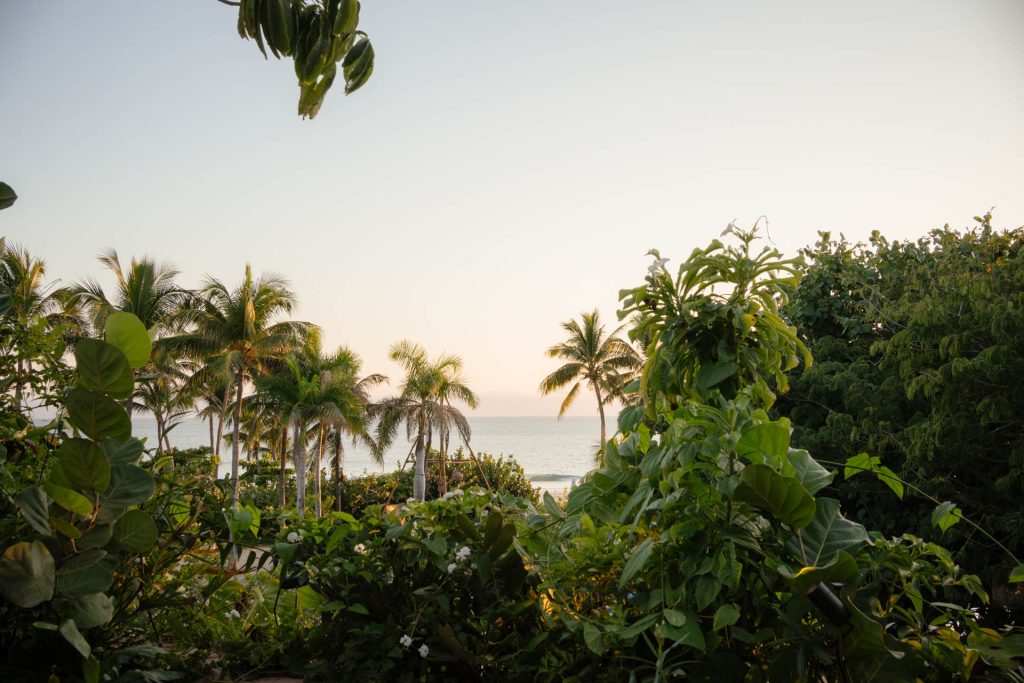
A Culinary Star is Born
Many people invest in self-discovery in their 20s, just figuring out what professional path to follow. A few people, it seems, are destined to go straight to the top with outstanding talent in doing what they love. For sure, Daniela Soto-Innes belongs to the latter group. As a 14-year-old training at Le Cordon Bleu in Austin, she set the stage for super-charged career advancement.
By age 20, Soto-Innes had put aside competitive swimming to focus on cooking. Recruited by founder Enrique Olvera as chef de cuisine at Cosme, she was quickly recognized as one of New York City’s outstanding young chefs, winning the prestigious James Beard Rising Star Chef Award the following year. In 2019 at age 28, Soto-Innes became the youngest recipient of the “World’s Best Female Chef” at the World’s 50 Best Restaurant Awards, billed as the Oscars of fine dining. At the time, Daniela commented on the controversial nature of the gender distinction saying, “I decided that if I ever ran my own kitchen it would be more like the kitchens I grew up in: full of joy, happiness and community. That year, Soto-Innes’ Manhattan restaurant was #1 in the U.S. and #23 in the world and she was cited as the “Most Exciting Chef” by The New York Times and The Wall Street Journal.
Nothing is Ordinary

Approaching Rubra’s tunneled entrance, anticipation builds. A terrace benefiting from ocean views connects to the indoor-outdoor restaurant beyond. Faint pink stone and deep green foliage dominate the space where patterns of light are filtered across a ceiling of wooden lattice slats.
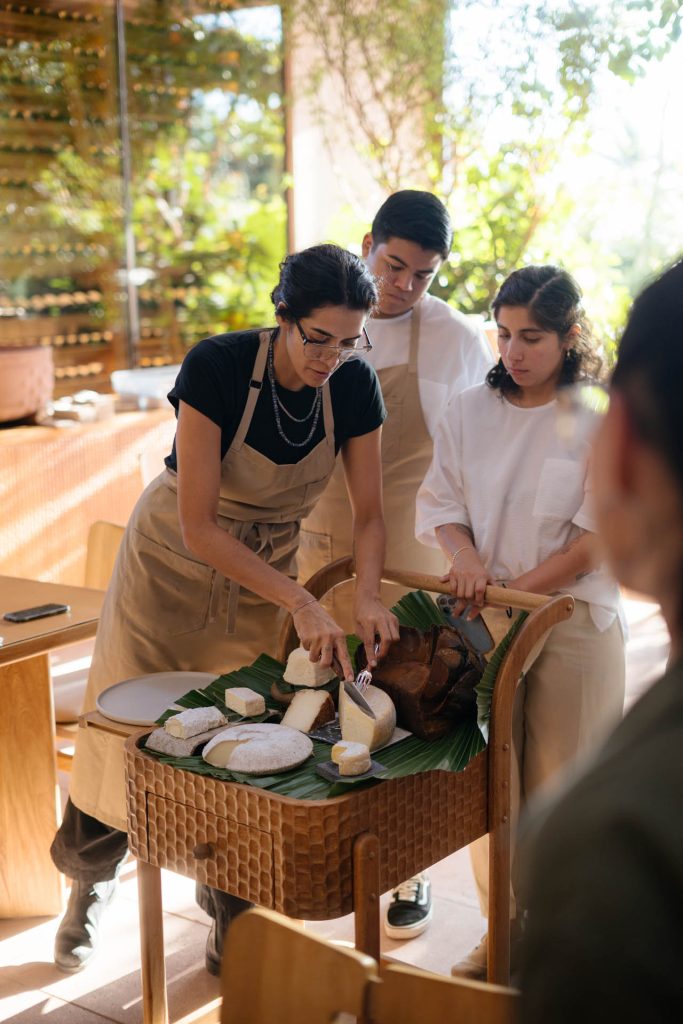
In a place where a plate is never only a plate, the emotional connection matters. Everything is bespoke and nothing is ever ordinary. Presentation is immaculate and imaginative. Beyond food, all details are thoughtfully executed: textiles, materials, lighting, ventilation, shapes, colors, utensils, tabletops, carved chairs—and the playlist, of course.
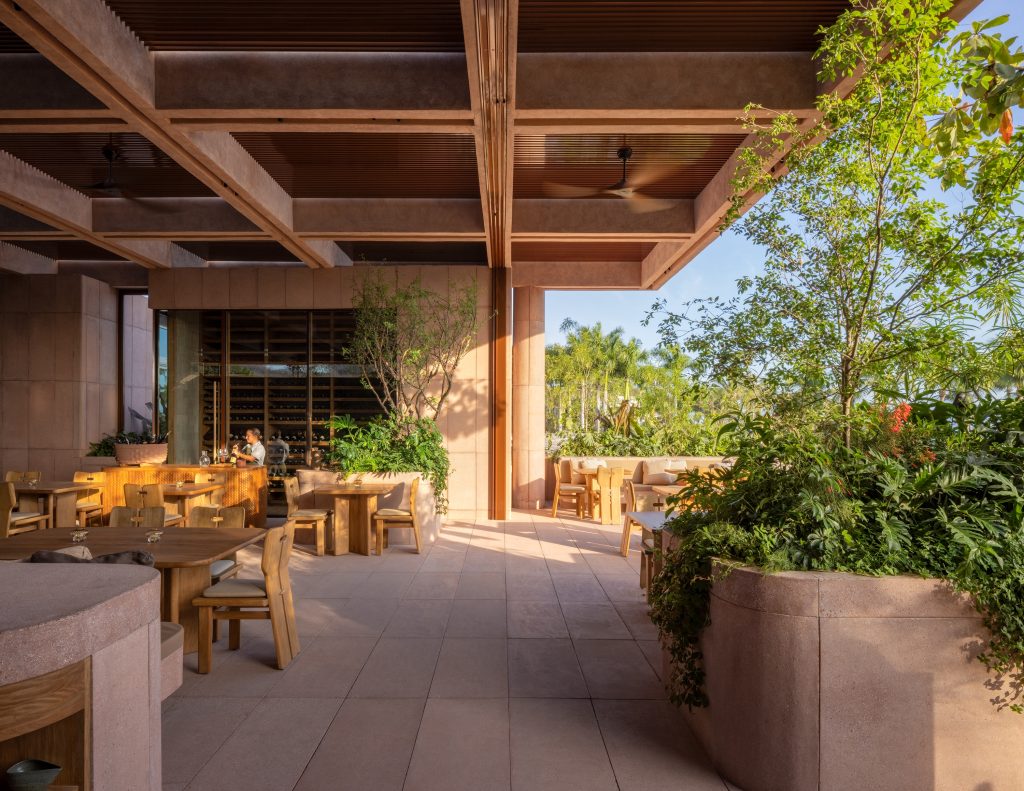
Rubra is Woman-Powered
Rubra means red and also refers to the Latin name of a native Mexican plant with pink flowers that grows here in abundance. Soto-Innes says it’s a “strong, feminine name” for the restaurant that is predominantly “woman-powered.”
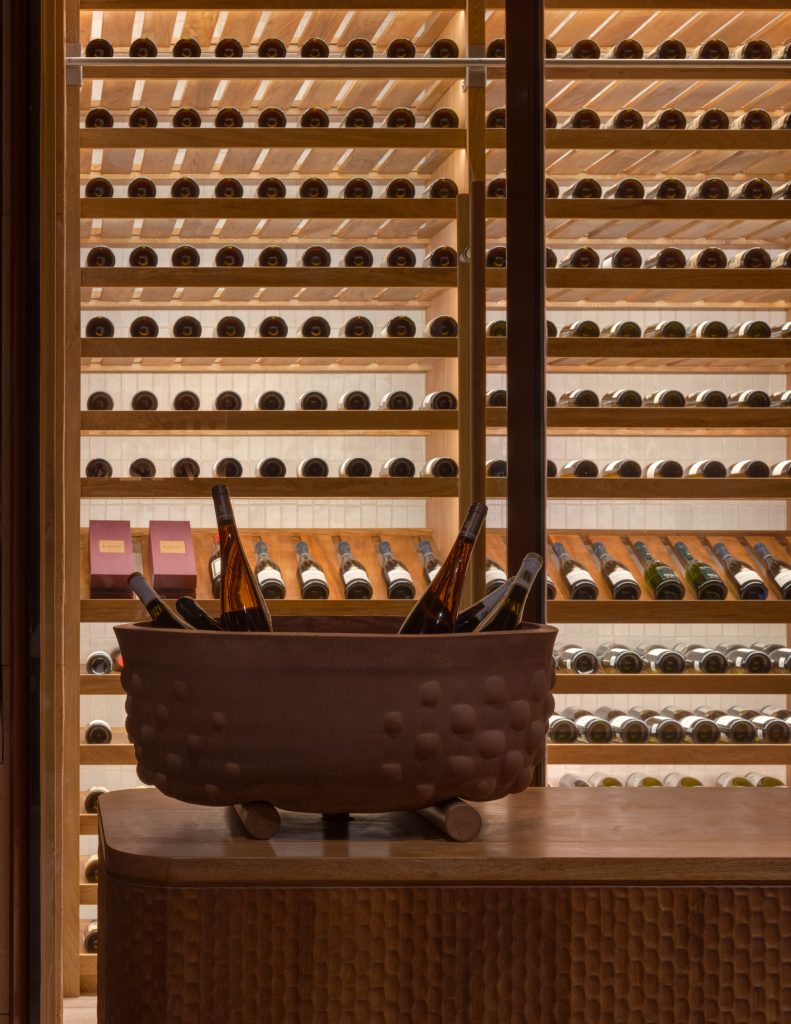
Presiding over the extensive collection at Rubra’s exposed wine cellar, Beverage Director Andrea Hernández is the former sommelier at Quintonil, a two-star Michelin restaurant in Mexico City. At Rubra, Hernández curates a list focused on organic, biodynamic and low-intervention wines. “While not completely natural, 90% of our list are producers who work organically or biodynamically and our largest producer farms 60 hectares, so we’re supporting small, family farms,” Hernández said. “Wine has been one of my growing passions through the years,” Soto-Innes told Decanter. “The level of spiciness in my cooking, for example, has gone down a lot because I want the food to pair well with wine. I want the two to sing together,” she explained.
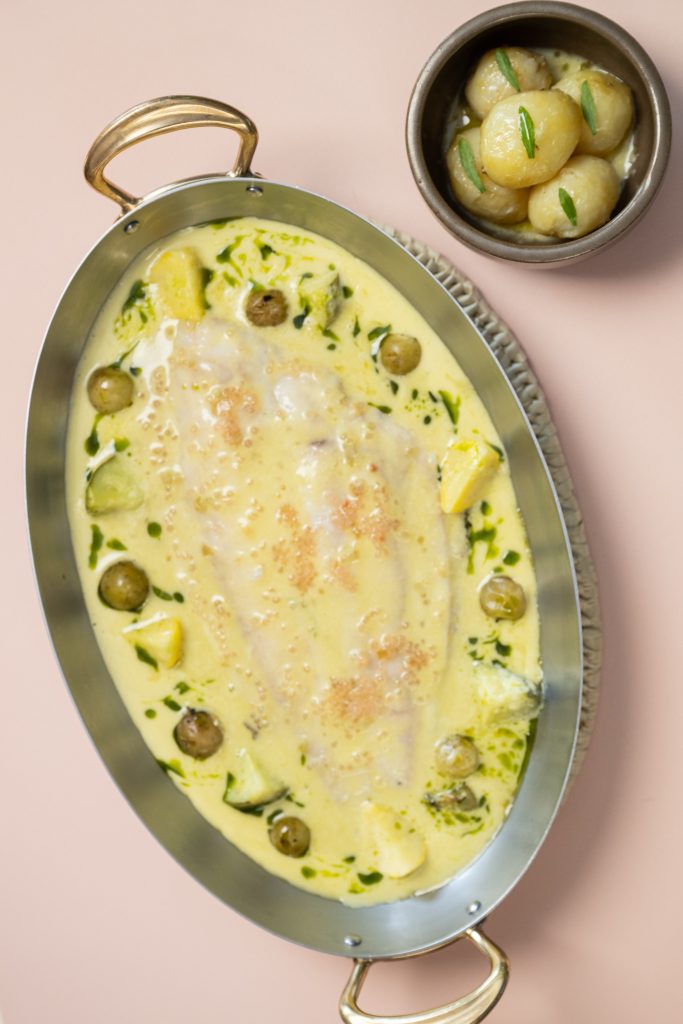
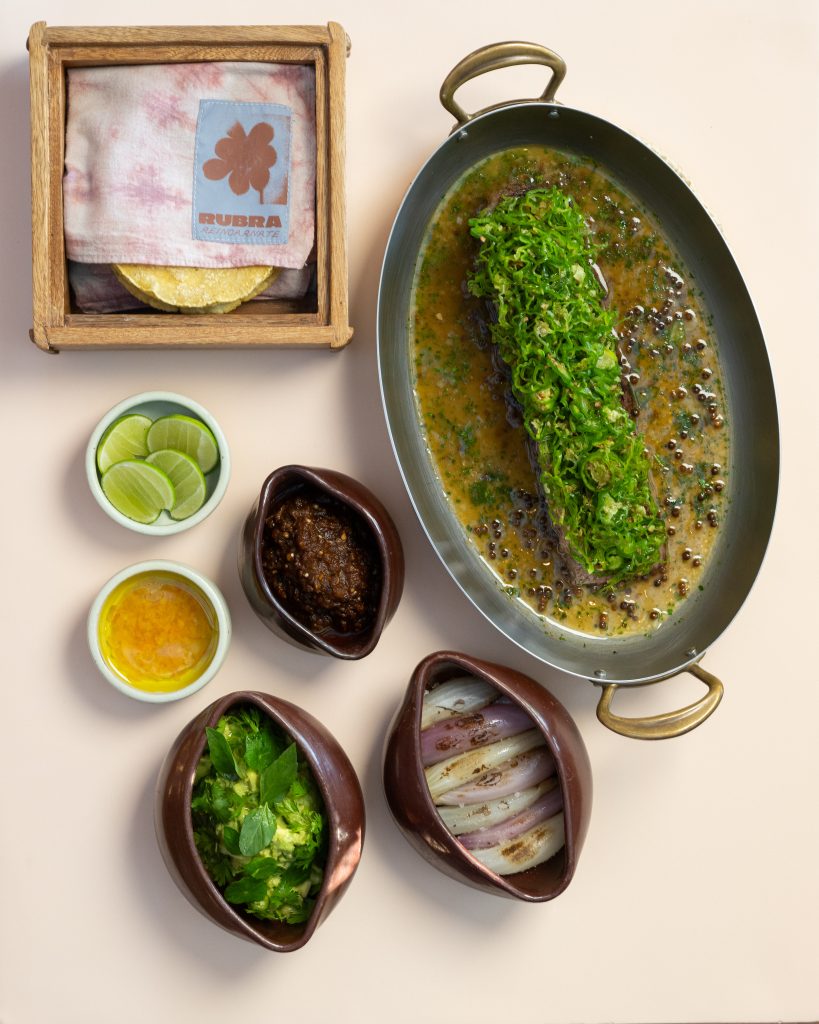
Photos courtesy of Rubra

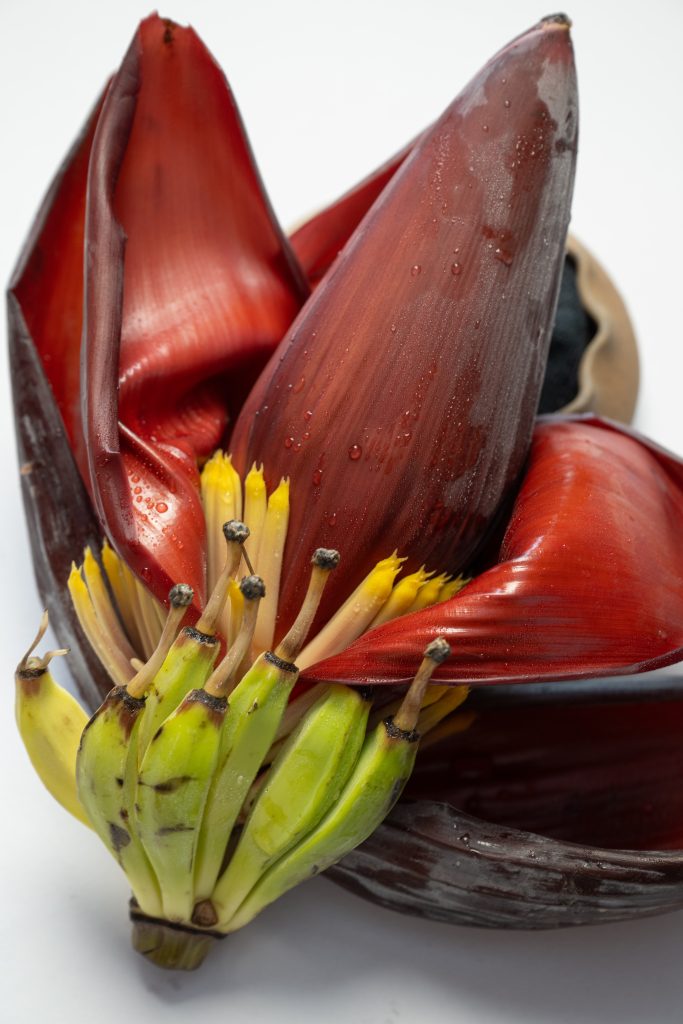
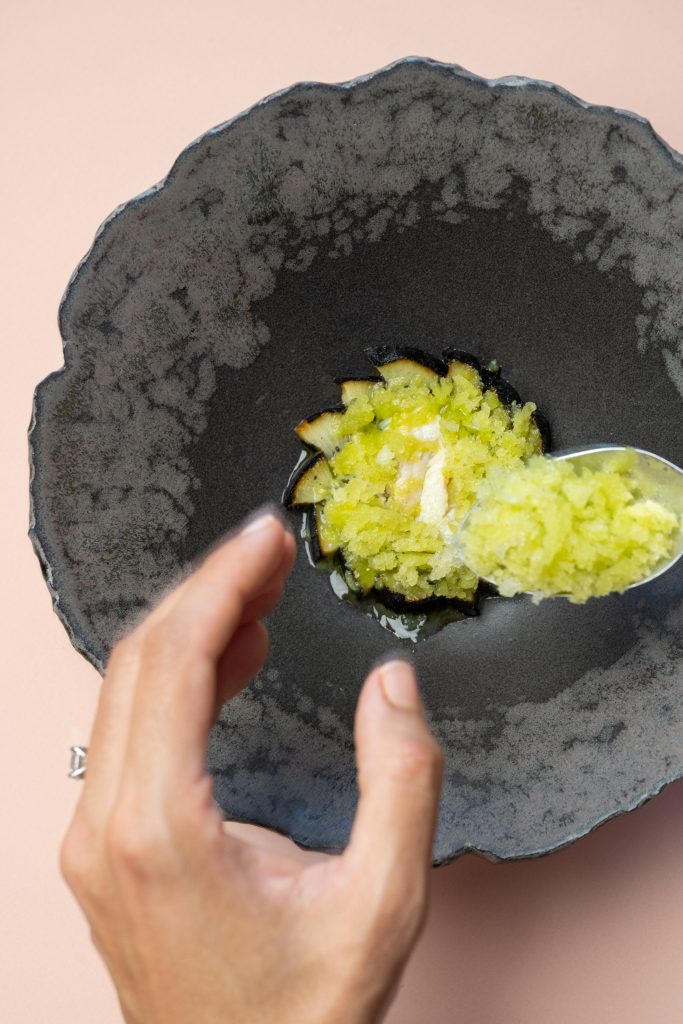
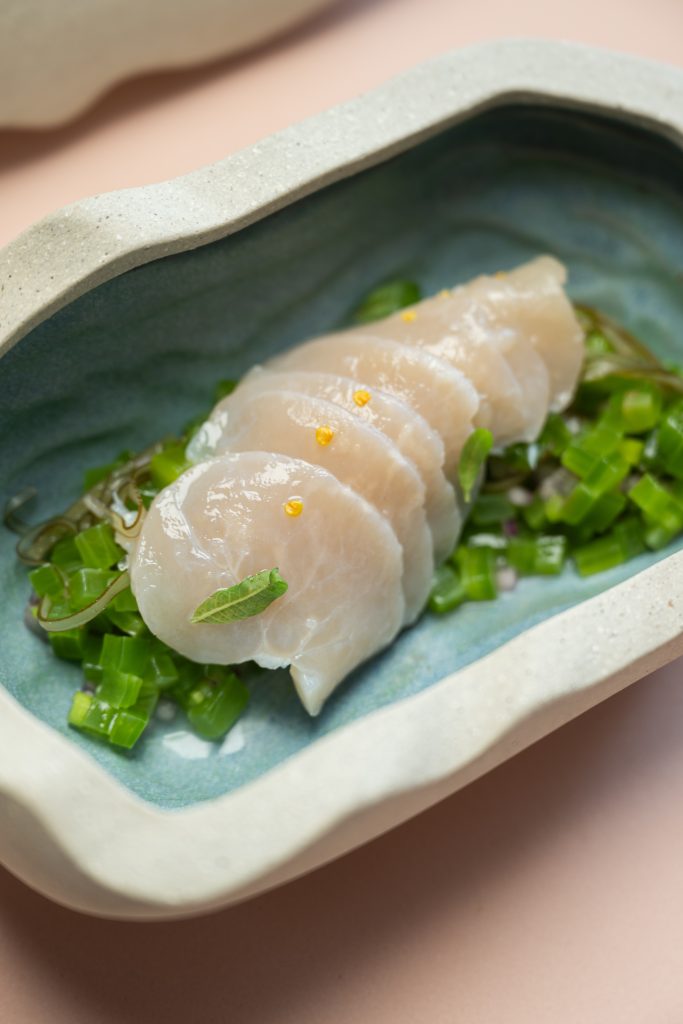
Speaking about her deep loyalty in her Cosme-to-Rubra female-led team, Soto-Innes applauds sisters Estefanía and Valentina Brito, half of a set of Venezuelan quadruplets. “They’re the fastest, cutest, most fun cooks I’ve ever seen.” As a Mexican woman leading a diverse team, I believe with every day, every meal, every guest, we can fight against the ignorance and prejudice which tells us our voices shouldn’t be heard.”
Welcome to Riviera Nayarit, Chef Daniela! We hear you.
